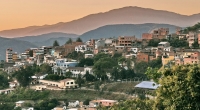
Coroico is a relaxing, low-altitude spot where visitors can escape frigid highland nights. The trip from La Paz traverses the Yungas Road, which makes for a photogenic and adrenalin-charged entrance into this laid-back resort town. Perched atop the peak of Cerro Uchumachi, Coroico offers gorgeous views of orchards, forested canyons, cloud-covered mountain tops, and the snow-capped peaks of the Cordillera Real. Coroico is a good base for some interesting hikes into the jungle and for mountain-biking trips into the local area, including guided descents of the precipitous highway.
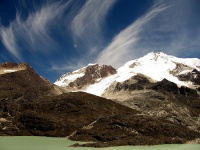
Located in the Cordellera Real range, Huayna Potosi is a tremendous stop for adventurous travellers. The mountain is a mere 15 miles (24km) north of La Paz and only around 1,000 people a year make it to the summit. Many of those who attempt the climb turn back due to cold temperatures and the high altitude. The climb can be done in two daily stages and several difficult snow and ice routes go up the face. Those who make it to the summit will be rewarded with breath-taking views over the Cordillera Real range, Lake Titicaca and La Paz.
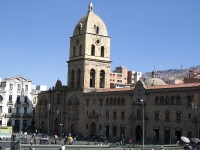
People congregate in this imposing church's plaza, which is a mixture of neo-classical Spanish and mestizo architecture. Construction began in 1549 and only finished in the mid-18th century. Oftentimes, travellers will see colourful Quecha or Aymara wedding processions on Saturday mornings, leading to and from the church. The plaza is a wonderful place to pass the time and watch Bolivian life unfold on any day of the week. Visitors should climb the atmospheric stairway to the fabulous rooftop and enjoy the great views of the city.
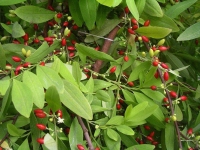
The museum covers the role of coca in Bolivia's culture and traditions. Visitors will learn about the leaf's healing properties, its use in Andean religious ceremonies, its chemical breakdown and different species. They will also canvas its use by soft-drink and pharmaceutical companies, and how it is turned into cocaine. Actually, one of the institution's missions in to counter the plant's cocaine-related stigma. Among other things, guests will leave knowing how to correctly chew coca leaves, which will allow them to feel its stimulating effects.
Address : Linares 906, La Paz Zona 1, Bolivia
Website : www.cocamuseum.com
Telephone : +591 2 2311998
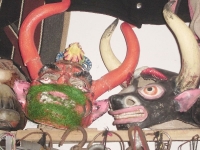
Mercado de Brujas (the Witches' Market) offers tourists a truly Bolivian experience. Situated in a maze of narrow alleys in La Paz, it stocks an unusual collection of merchandise, including charms, potions, and herbs used in Aymara traditions. The traditional market scene stretches around it, selling a huge a variety of everyday goods, as well as Andean art and handicrafts. Visitors can expect to see yatiri (witch doctors), who wear dark hats and carry pouches of coca for fortune telling.
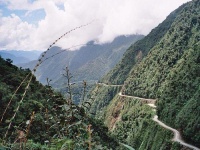
Yungas Road is not an attraction for the faint of heart. Dubbed the 'El Camino de la Muerte' (Road of Death), it stretches between La Paz and Coroica and claimed 200 to 300 lives every year until 1994. Paraguayan prisoners built the road during the 1930s Chaco War, and it has extreme drops of up to 2,000 feet (609m). The Yungas Road has since become a popular tourist destination among thrill seekers, particularly mountain bikers. It remains dangerous, though, and trucks have serious problems passing each other. Crosses dot the road and mark where cars have plunged off the steep cliff. Drivers on Yungas Road must obey a strict set of rules, as rain and fog often reduce visibility and there are no guard rails. Contrary to normal Bolivian driving rules, drivers keep to the left, and uphill vehicles always have the right of way. Yungas Road has been upgraded with many new safety measures in the last decade, but the original route, now called North Yungas Road, is still in use by tourists.

Travel Guide powered by Word Travels, copyright © 2023 Globe Media Ltd. By its very nature information in this travel guide is subject to change at short notice and travellers are urged to verify information on which they're relying with the relevant authorities. Neither Globe Media Ltd nor Travel Vogue can accept any responsibility for any loss or inconvenience to any person as a result of information contained above.